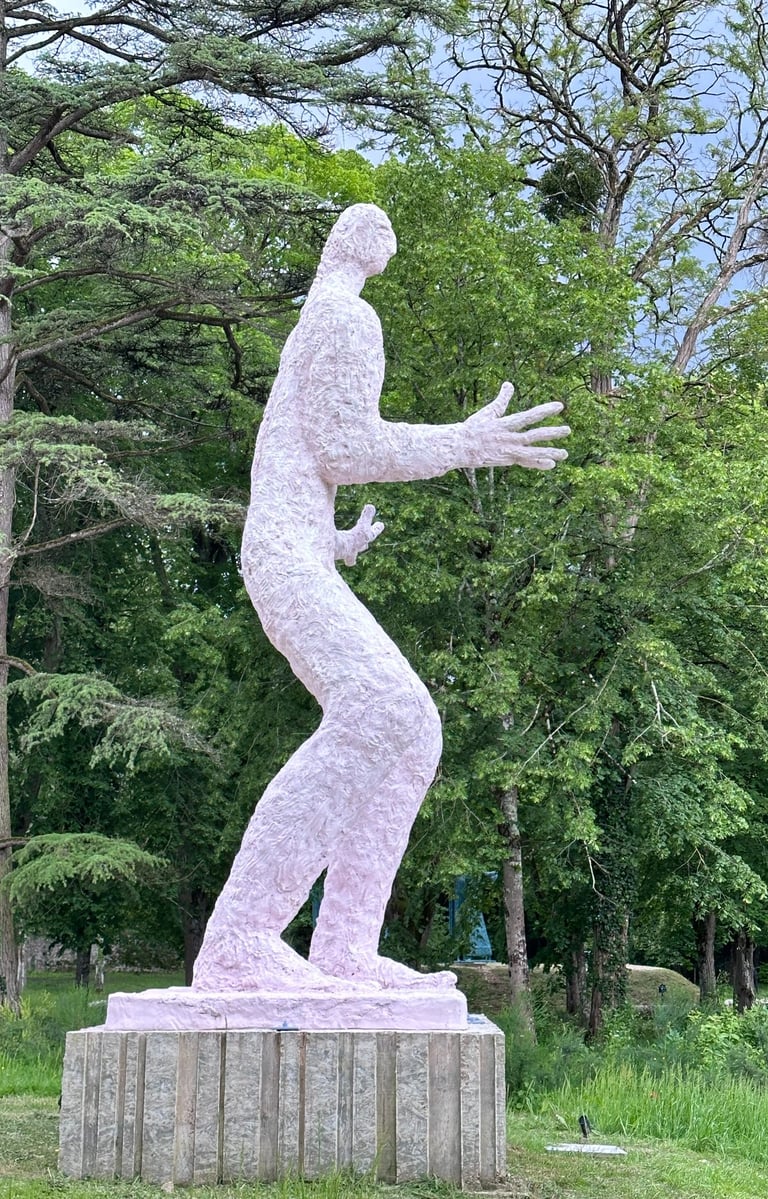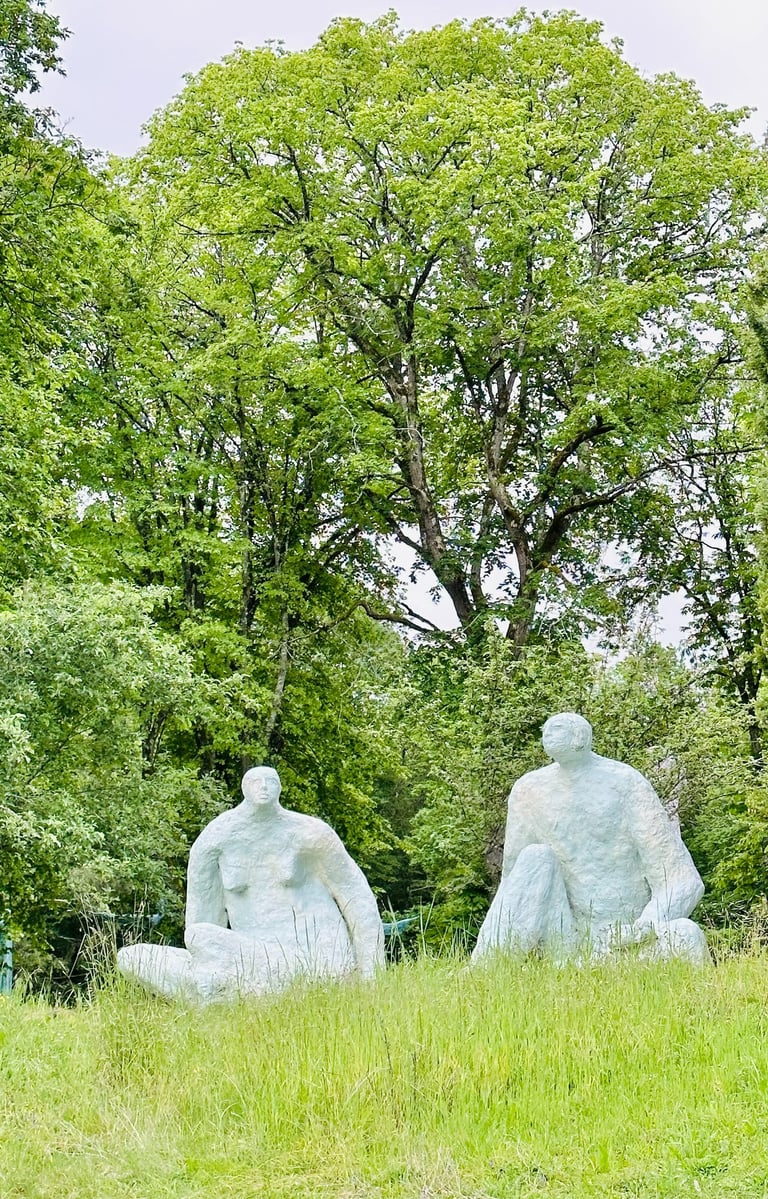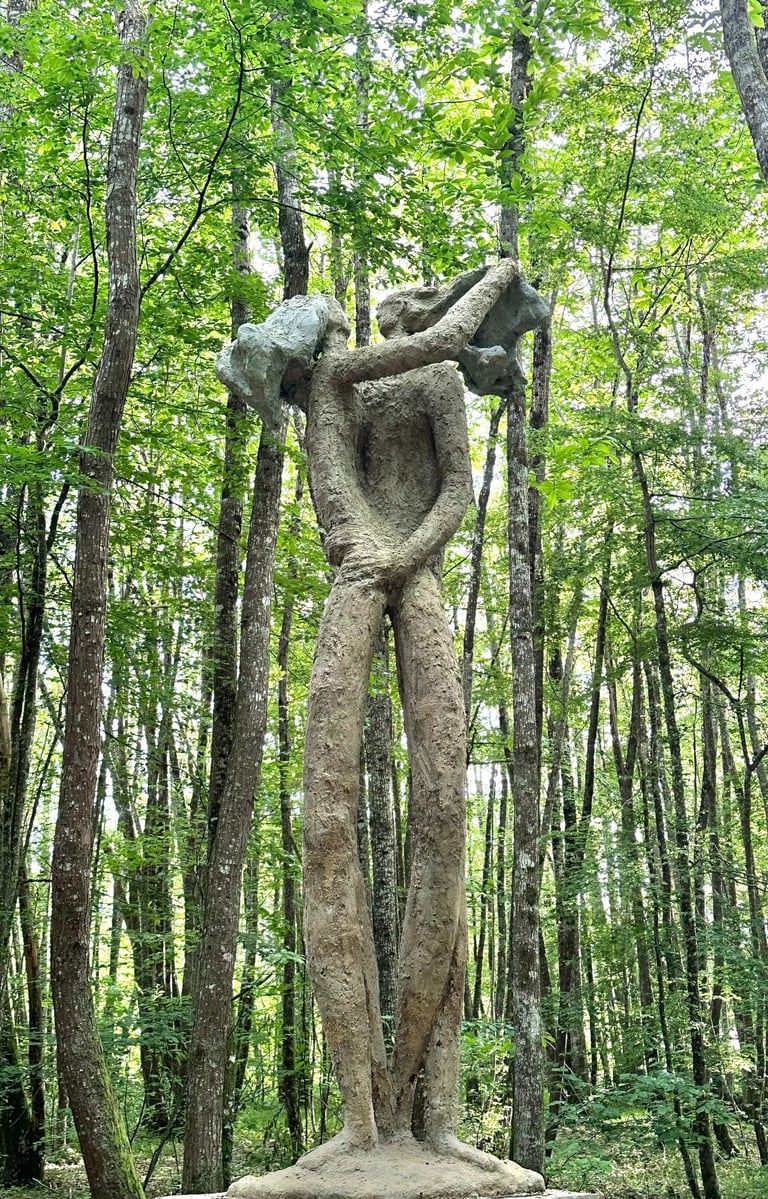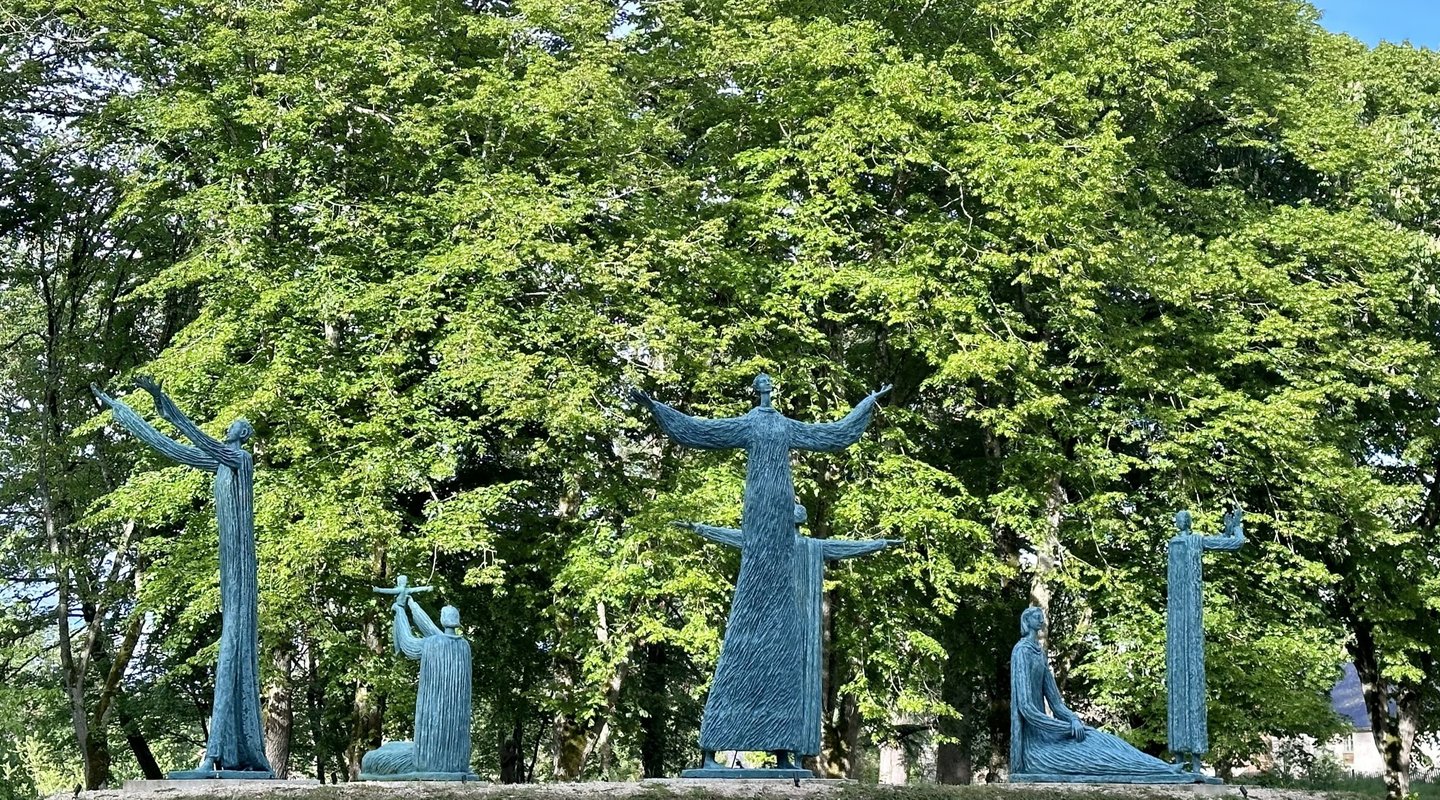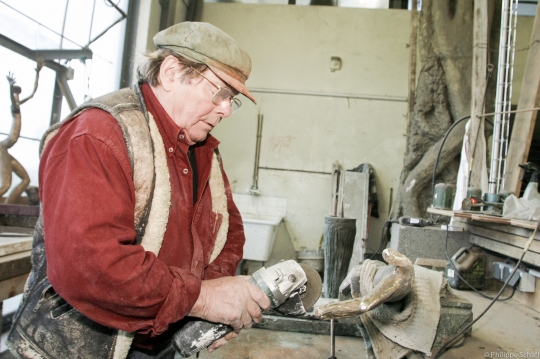

Born 16 /11/ 1925, in Montenay, France
Died 3 /08/ 2011, in Mayenne, France
Louis Derbré was a renowned French sculptor from Mayenne, France. Self-taught, he gained international renown for his monumental works in bronze, marble, and stone, often inspired by ancient art and figurative sculpture. His style blends influences from ancient Egypt, Rodin, Maillol, and Giacometti with a personal touch marked by the expressive power of his forms.
Career and main achievements:
In 1951, he received the Fénéon Prize, awarded by Louis Aragon, for his portraits. This prestigious prize in the art world marked the beginning of a promising career that would flourish over the years thanks to his undeniable talent and unique artistic vision. His works captured the attention of critics and the public alike, who recognised his exceptional skill. In 1953, he was awarded the National Prize of the École des Beaux-Arts in Paris, an honour that attests to the importance and impact of his work within the French art world. This allowed him to make a name for himself in the field of sculpture, where his commitment to art became increasingly apparent, attracting patrons and art galleries wishing to collaborate with him. In 1962, the Hervé Odermatt Gallery on Avenue Matignon in Paris organised his first exhibition, ‘Rodin, Maillol, Derbré’. The 26 works he presented made him a recognised sculptor. At that time, he was able to combine traditional techniques with a contemporary sense of form, which appealed to a wide audience. He set up his studio in Arcueil, in the Paris region, where he continued to create and explore new artistic horizons.
In 1972, ‘La terre’, a 9-metre-high bronze sculpture, was chosen by the SEIBU group to adorn Ikebukuro Square in Tokyo. A replica was exhibited at Place des Reflets in La Défense, Paris, a powerful symbol of cultural exchange between East and West. From then on, the land of the rising sun would have a special resonance for Louis Derbré, nourishing his inspiration and extending his fame beyond French borders. He created numerous public works, notably the statue of Georges Pompidou in 1984, but also the ‘Memorial of Peace’ near Hiroshima in 1997. Louis Derbré erected six monumental sculptures, each five metres high, for the Peace Memorial. These works, through their size and visual impact, became places of contemplation and emotion, forever marking the artistic and cultural landscape of the places where they were installed. His most monumental creation, ‘Le Mythe’ (The Myth), is 17 metres high. This emblematic work testifies not only to his technical skill, but also to his desire to convey powerful messages through art. ‘Le Mythe’ quickly became an iconic work, attracting visitors from all over the world and sparking debates on the meaning of myth in contemporary culture.
He also created several direct carvings, notably in Carrara marble. Marble, the noble material par excellence, allowed Louis Derbré to explore elaborate textures and forms that add an extra dimension to his creations, revealing his deep respect for natural materials and their expressive potential. In 1998, as an Officer of Arts and Letters, he was awarded the Chevalier de l'Ordre du Mérite medal, a symbol of recognition for his commitment to culture and art. This prestigious title confirmed his status as an icon in the arts world, confirming his continuing influence on future generations of artists. In 2000, a major exhibition at Place Vendôme presented 35 sculptures, including around 20 that were 5 metres high. This event was a testament to his growing success and his ability to reach an ever-wider audience with his spectacular creations that challenge and move us. His perseverance and determination have earned him a place as one of the most respected artists of his generation.
Since 1991, the artist has been based in his home region of Ernée, where he has created a cultural centre comprising a garden of monumental sculptures, an open-air theatre, an exhibition hall and a centre for learning about the arts and crafts. This venue, known as the ‘Louis Derbré Cultural Centre’, aims to make art accessible to the public and preserve his legacy. The centre has become a hub for artistic encounters, promoting the creation and dissemination of contemporary art in the region.
Louis Derbré died on 3 August 2011. After his death, his works were preserved and several projects were set up to keep his art alive, such as the sale of his space in Ernée in 2019 and the display of his sculptures in various locations in France and abroad, thus ensuring that his artistic legacy continues to inspire and move future generations.
Louis Derbré is a sculptor who has left his mark on monumental sculpture. Drawing inspiration from tradition and modernity alike, he remained deeply rooted in his rural origins, driven by his passion for his craft. His work conveys a message of hope and brotherhood, affirming that art has the power to unite people and overcome differences. His career and contributions to art continue to inspire artists today, and will continue to do so for generations to come. His entire body of work is now housed at Château de Conon. Thanks to Mr and Mrs Desfemmes, patrons of the arts, the sculptures of Louis Derbré in their collection have been brought together with those donated by his daughter, Mireille, to the Louis Derbré Endowment Fund. This has enabled the creation of the Louis Derbré Museum-Promenade in Cellettes, just 15 minutes from Blois. The strength of his work lies in its timelessness and spirituality.
Louis Derbré: the artist of peace.
Louis Derbré (1925-2011)
